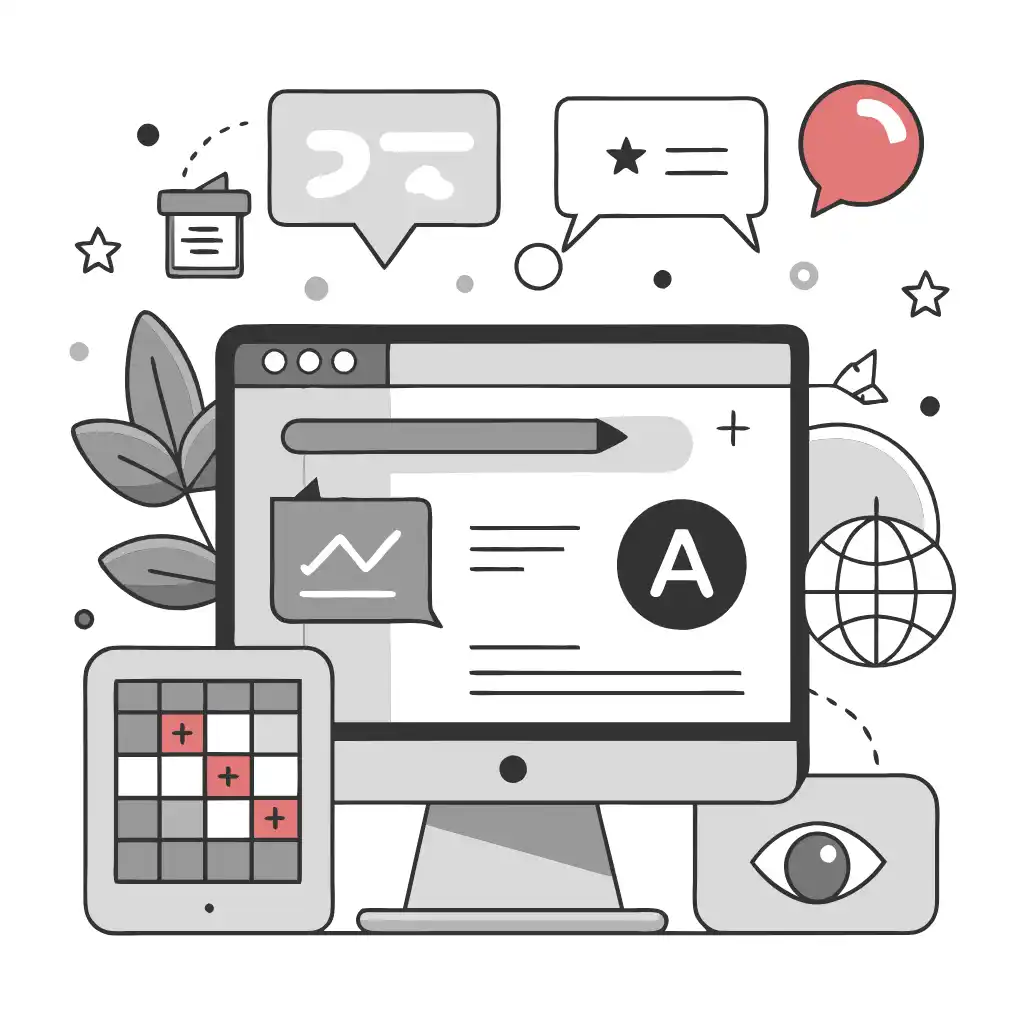Can Google Translate Boost Your SEO? Top Alternatives for Going Global with Your Startup
How Accurate is Google Translate?
Google Translate is one of the most well-known translation tools, gaining immense popularity due to its simplicity, immediacy, and free access. This service can be an indispensable assistant when you’re abroad and faced with an unfamiliar language.
However, despite all its advantages, Google doesn’t always provide a flawless translation, especially when dealing with intricate sentences laden with nuances. The main challenge is that the tool sometimes fails to fully grasp the context and subtleties of the original text.
Furthermore, using Google Translate for your website content might not yield the desired results in terms of SEO. Machine translation doesn’t account for keywords and optimization required for effective search engine rankings. So, before leveraging it for business or professional purposes, such as translating your website, it’s wise to reconsider the reliability and efficiency of this tool in the context of SEO.


How Does Google Translate Work?
Google Translate is a product of astonishing technological evolution and profound data analysis. This tool amalgamates information from various sources, including the Europarl corpus, consisting of European Parliament documents translated by humans. Moreover, numerous other resources and databases are employed to refine its algorithms.
In its infancy in 2006, Google Translate was grounded in statistical machine translation. This approach yielded decent results for shorter texts, but faced challenges with longer and more complex sentences. By 2016, the company introduced a groundbreaking solution in the form of Neural Machine Translation (NMT). This system views sentences as entire entities, enabling better capture of context and linguistic nuances.
However, despite all these advancements, Google Translate has its limitations, especially when it comes to business and online promotion. For large websites and corporate platforms, relying on this tool might not guarantee optimal translation quality. Furthermore, the translated content might not adhere to SEO standards, potentially hindering website visibility in search engines.
Today’s Google Translate is a powerful system, continually undergoing refinement. Nonetheless, when utilizing this tool for business objectives, it’s crucial to assess potential risks and constraints.
Is Google Translate Accurate?
Thanks to its support for over 130 languages, Google Translate holds a leading position among many automatic translation tools. It’s worth noting that this tool has evolved over many years, starting from utilizing statistical machine translation and transitioning to neural networks to enhance quality.
However, despite all the innovations and algorithmic changes, its accuracy isn’t always perfect. For instance, for popular languages like Spanish, the accuracy can approach a threshold of 90%. Nevertheless, studies from various institutions have revealed different results. For instance, UCLA Medical Center in 2021 found that Google Translate retains the primary meaning of the text in 82.5% of cases, with accuracy for different language pairs varying from 55% to 94%.
Interestingly, despite the complexity of medical texts and their translation, Google Translate performed commendably, especially when it comes to literary text. However, when it comes to conversational style or everyday expressions, the tool might make mistakes, providing translations with an accuracy of around 72%.
One conclusion drawn from previous analyses of Google Translate’s performance was its continuous improvement. However, like any technology, it has its limitations. Despite enhancements and adaptations to linguistic nuances, Google Translate can occasionally produce imprecise or odd translations, especially when dealing with informal and everyday expressions.


Is Google Translate Reliable for Website Translation?
Efficiency and speed in the online world are paramount. When encountered with the need to translate large volumes of website text, many turn to convenient machine translation tools like Google Translate. Since its inception in the 1950s, this tool has come a long way, and thanks to deep learning technologies, it has become considerably more reliable.
However, there are nuances that make its use not always optimal for major and medium players in the online space. Despite its efficacy in translating English texts and an extensive database, Google Translate might not always provide the necessary accuracy for specialized industries or complex contexts.
While a large portion of the internet is written in English, providing Google Translate a solid foundation for learning, some languages and dialects may be less represented. This poses risks for the accuracy of translations into such languages.
For major companies looking to expand their operations to the international market and pay special attention to their image, it’s crucial to select a service tailored for translations specific to types and needs of the website, rather than one-size-fits-all solutions. Google Translate might serve as an excellent starting point, but employing specialized services ensures superior content quality.
Are There More Accurate Translation Tools than Google Translate?
In today’s world, there are numerous machine translation tools, each with its own features and advantages. DeepL, Amazon Translate, and Microsoft Translator are major players in this market, and they all utilize machine learning to optimize their algorithms.
DeepL, leveraging the extensive Linguee database developed through manual translations, offers high-quality translations.
Amazon Translate performs exceptionally well when translating into French and Simplified Chinese without requiring further corrections.
Microsoft Translator, on the other hand, boasts a broad range of supported languages (111) and showcases strong performance, especially when dealing with German and Portuguese.
According to a study by ConveyThis, while all these tools handle European languages successfully, they also display excellent quality in translating into Arabic. It’s crucial to understand that each tool has its strengths, and combining them might yield the best results. It’s unwise to rely solely on one tool, as a mix of different resources can provide the most accurate and high-quality translation.

Should You Use Google Translate?
Google Translate is undoubtedly a very useful tool, especially considering its potential to simplify the translation process and reduce costs. However, it’s important to understand that the perfect accuracy of its operation depends on the context, style, and target audience. If you need to quickly translate a few simple sentences or phrases, Google Translate can be a great aid.
The application is particularly effective in situations such as:
Working with less prominent website elements, like footer information.
Translating instructions or other text types that don’t require deep contextual understanding.
Processing user reviews on products or services, where the overall meaning is more important than each individual word.
However, there are times when Google Translate might not meet your expectations:
When translating idiomatic expressions that are specific to a culture or language.
When trying to use the service as a dictionary for individual words—the results might not be entirely accurate.
When working with texts that break standard grammatical rules or have a complex context, for instance, translating between languages with different sentence structures.
When dealing with intricate stylistic elements like sarcasm or irony.
In situations where translation accuracy and stylistics are critical, it might be wise to consider enlisting professionals or additional resources for verification and correction.
The Best of Both Worlds: Machine Translation and Human Editing
Google Translate offers a plethora of impressive features; however, it shines best when combined with other translation tools and the involvement of human editors. According to our research, 99% of all translations globally are not done by professional translators. On average, only 30% of the content translated by machines is edited. This is a significant achievement for those considering machine translation usage. While humans are still needed to spot inaccuracies — as artificial intelligence isn’t perfect — translation programs are invaluable. This means website translations done by machine tools are largely fit for use, requiring just minor tweaking.
Sounds like a lot of work, especially for small businesses, right? The good news? Services like ConveyThis simplify this process.
Visual Editor:
Medium and large businesses use ConveyThis for precise automatic translation of their websites. Although machine translation and automatic translation sound similar, automatic translation encompasses the entire workflow — from correction to content optimization for SEO, and then uploading back to the site. This way, you get guaranteed accurate translations.
- ConveyThis operates by choosing the best machine translation tool for a specific language pair to ensure maximum accuracy.
- Thanks to neural machine translation, ConveyThis swiftly identifies and translates all content on your site.
- There’s no need to manually translate every page. Additionally, it displays these translations in different language versions of your site.
- Using it is easy, and you can instantly translate and publish your content.
- This makes the localization and optimization of content in over 100 different anguages even simpler, including right-to-left languages like Hebrew and Arabic.
Curious about how it functions? Feel free to explore ConveyThis with a 7-day free trial and experience the simplicity of crafting a multilingual website.
Translation, far more than just knowing languages, is a complex process.
By following our tips and using ConveyThis , your translated pages will resonate with your audience, feeling native to the target language.
While it demands effort, the result is rewarding. If you’re translating a website, ConveyThis can save you hours with automated machine translation.
Try ConveyThis free for 7 days!